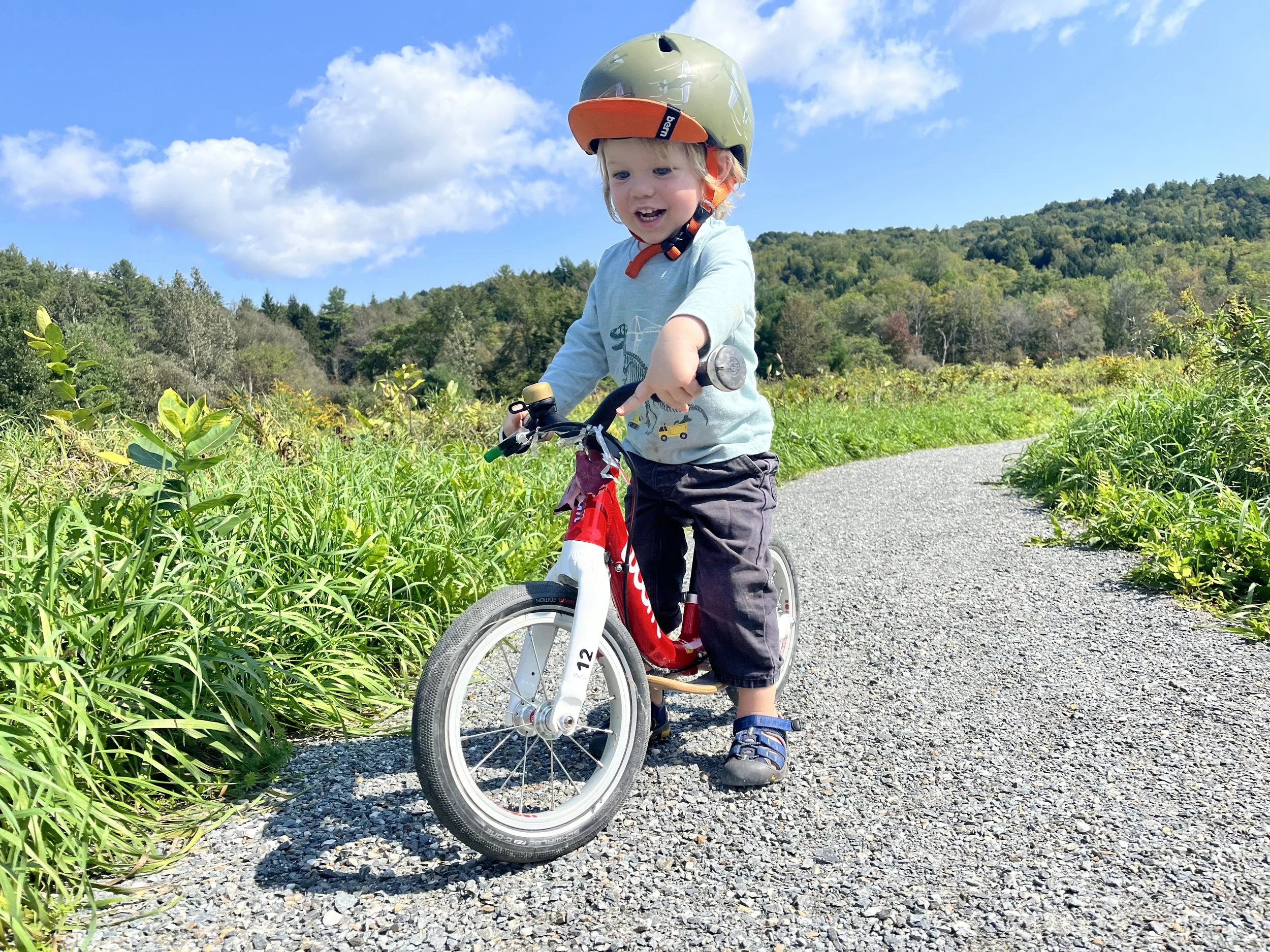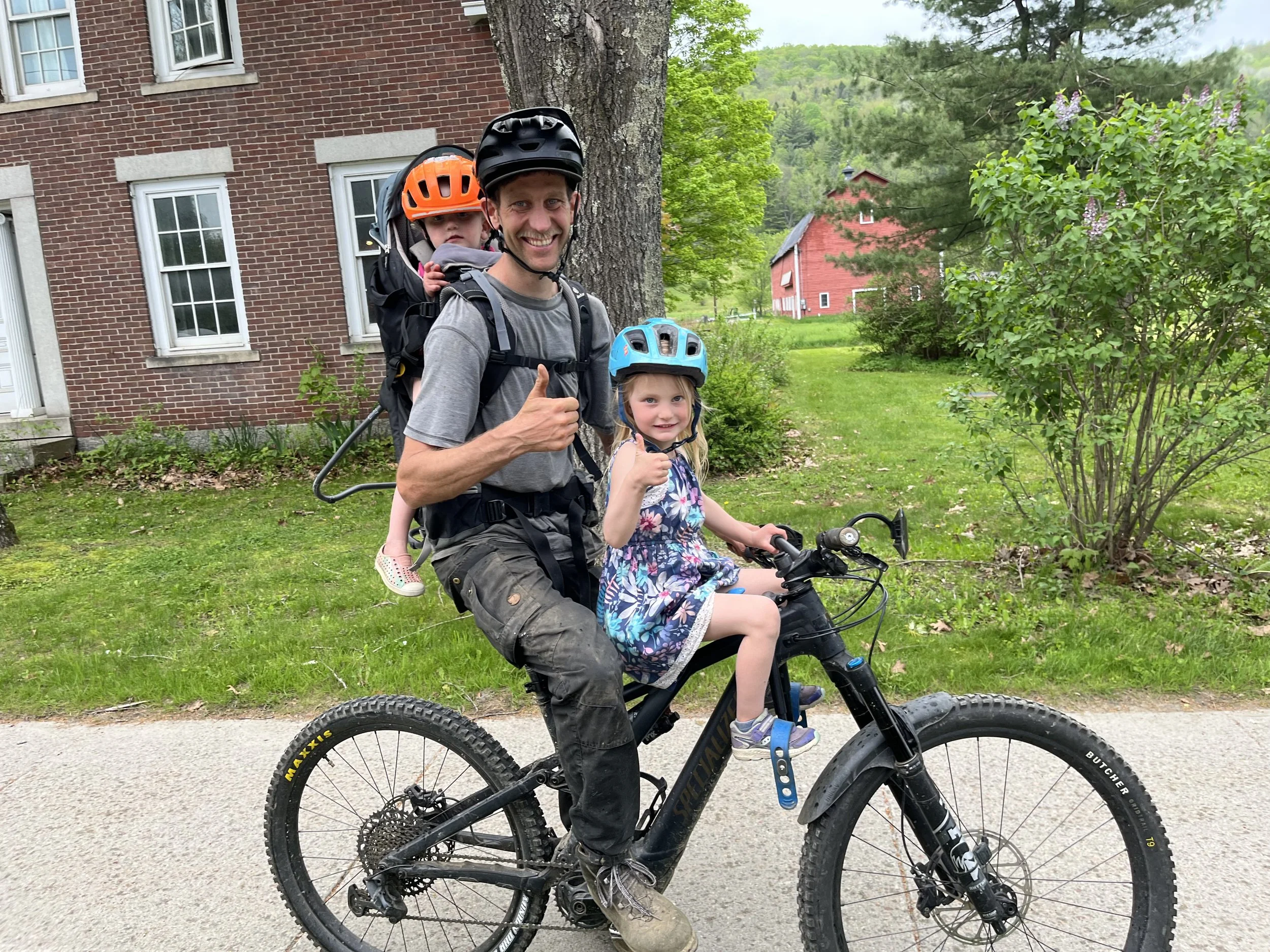Mad River Path overview
Imagine a brilliant October morning in the not-so-distant future. A wide and well-graded path runs the length of the Valley. In some places, it parallels VT-100, and in others, it meanders through adjacent meadows. Along the Path, groups of children are riding scooters to school, a young parent is pushing a stroller, morning commuters are biking to work, an older couple is on their way to the grocery store on e-bikes, and a group of tourists is rolling their bikes to a rack in front of the trail-side farm stand.
This is the Mad River Path of the future, an active transportation corridor extending from Warren to Middlesex!
The active transportation corridor will:
- Connect Warren to Middlesex with a multi-use path traveling parallel with, but separated from, VT-100 within the state right-of-way.
- Improve pedestrian and bicycling safety
- Provide inclusive and accessible alternatives to vehicle travel
- Connect to state-wide trail networks, including the Velomont and Cross Vermont Trails.
- Enhance the Mad River Valley’s recreation assets
The Mad River Path will improve the well-being of all and infuse the Mad River Valley with new energy for cooperation within and between our communities.
Background
In 2016, the MRV Moves Active Transportation Plan established a comprehensive valley-wide vision for connected trails, roads, and sidewalks in the Mad River Valley (MRV). MRV Moves called for a “consistent, cohesive and connected regional system” that would provide safe access between villages, schools, and businesses. The plan identified specific trail connections and highlighted the Route 100 corridor as a critical spine for the regional network. In 2023, Mad River Path and MRV Planning District successfully secured an $84,000 Transportation Alternatives Program grant to assess the feasibility of this opportunity.
Practical Approach
Using (and improving) existing trails, focusing on village-to-village connections, while reusing existing sidewalks through the village centers, interim configurations at bridge crossings, employing boardwalks through ecologically sensitive areas, and improving flood resilience, are examples of a practical “can-do” approach to design and construction of the path.
Long-term Commitment
Completing the Mad River Path is a long-term commitment that requires a sustained effort by the entire valley. Together, we will manifest a beautiful Path that connects communities, provides access to nature for everyone, improves well-being, reduces carbon emissions, and becomes a driver for the sustainable recreational economy.
Advisory Commitee
Misha Golfman, Michael Duell, Joshua Schwartz, Devin Klein Corrigan, Felicia Fowler, Bob Kogut, Kristine Kinney, Jonathan Ursprung, Hadley Gaylord, Jared Cadwell, Don Wexler, Dara Torre, Doug Wilson, Eric Baruzzi, Ira Shadis, Mac Rood, Kaiya Korb, Eric Friedman, Shannon Dunfey Konvicka, Brian Litmas, Melanie Grubman, Sam Robinson, Adrienne Magida






